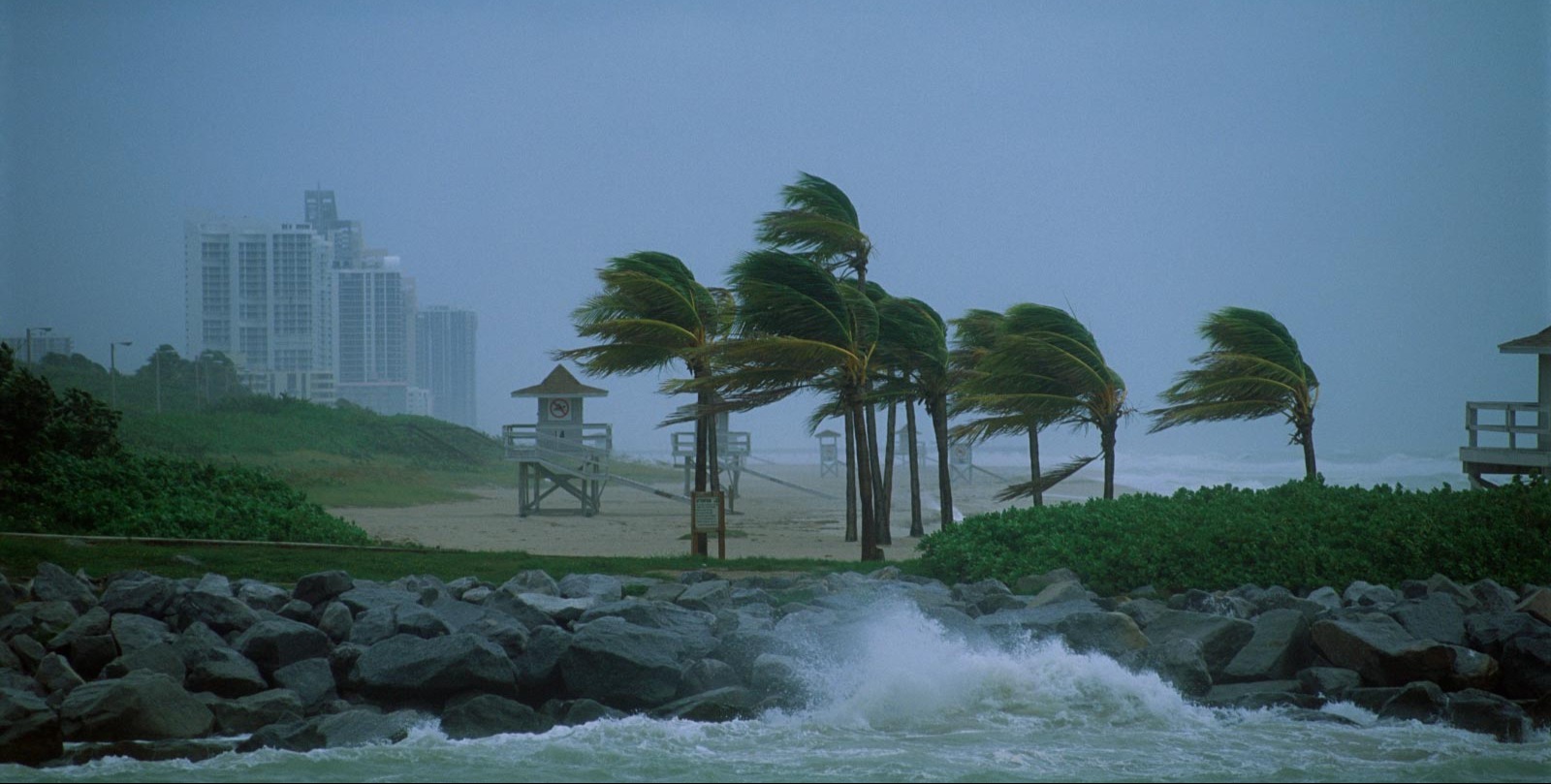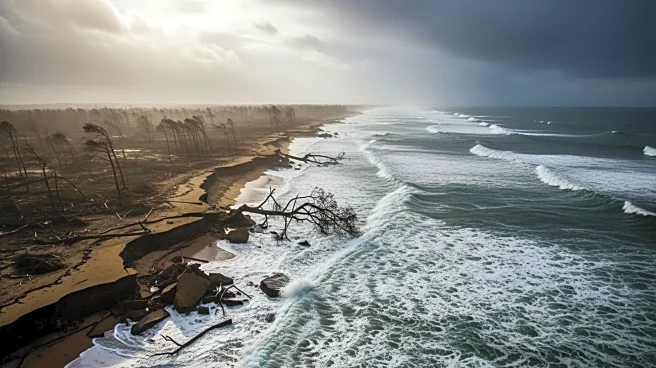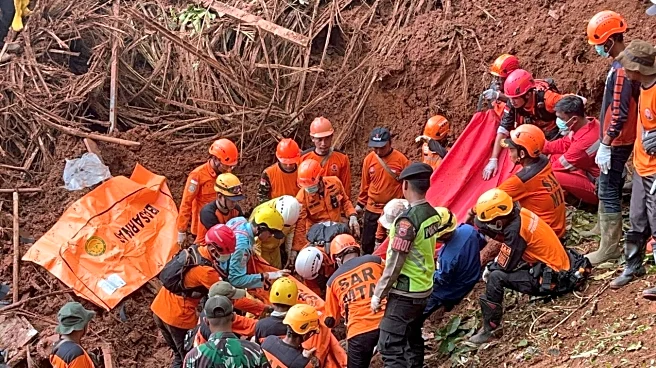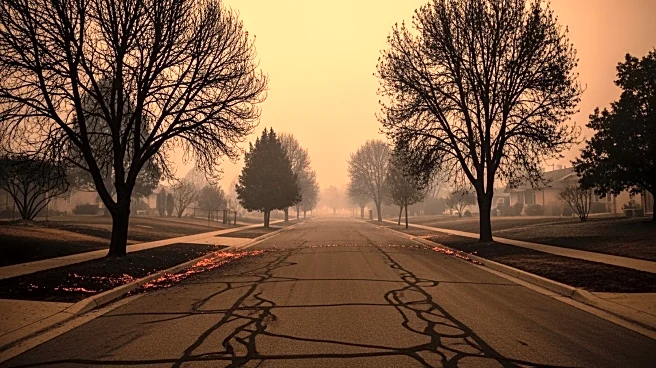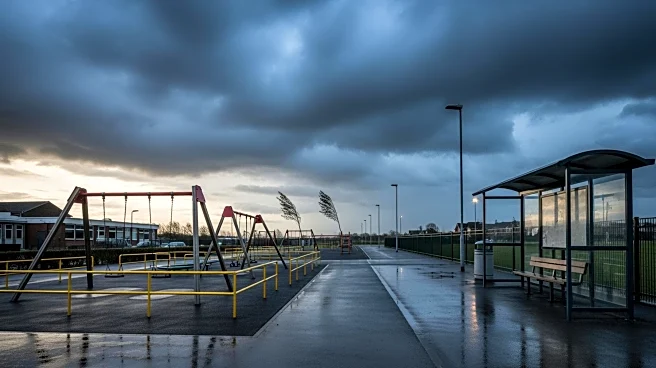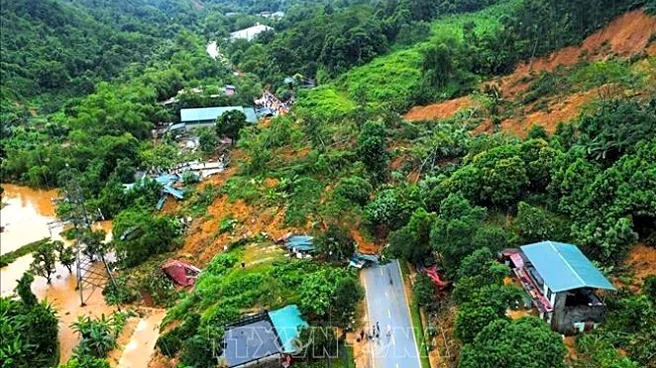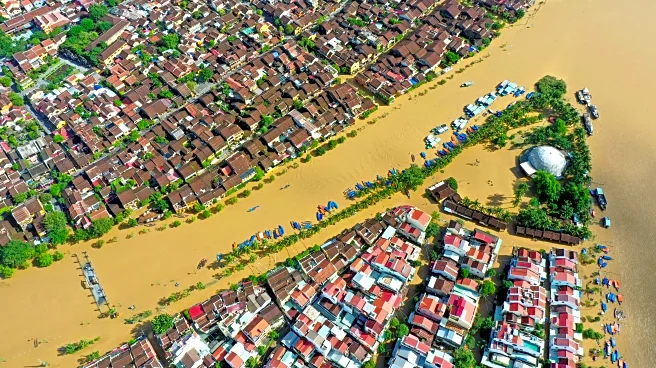What's Happening?
Central Vietnam is experiencing severe flooding due to relentless rains, resulting in the deaths of at least 41 people. The flooding has submerged over 52,000 homes and left half a million households and businesses without power. The coastal cities of Hoi
An and Nha Trang are among the worst-hit areas. Military troops and police officers have been deployed to set up emergency shelters and relocate tens of thousands of residents to safety. The flooding follows two recent typhoons, Kalmaegi and Bualoi, which also caused significant destruction. The government estimates that natural disasters have caused damage amounting to $2 billion between January and October this year.
Why It's Important?
The flooding in Vietnam highlights the increasing frequency and severity of extreme weather events in the region, which can have significant economic and social impacts. The damage to homes and infrastructure, along with the disruption of power supply, affects the livelihoods of thousands of people. The situation underscores the need for improved disaster preparedness and response strategies. Additionally, the impact on the coffee production belt in the central highlands could have broader economic implications, affecting both local farmers and international coffee markets.
What's Next?
Authorities have warned of continued moderate to heavy downpours in central Vietnam through the weekend, which could exacerbate the flooding situation. Efforts to search for the missing individuals and provide relief to affected residents are ongoing. The government may need to implement long-term measures to mitigate the impact of future natural disasters, including infrastructure improvements and enhanced emergency response capabilities.



